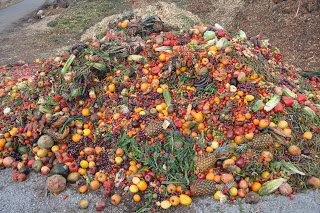"Our gastroenterologist keeps lecturing me about getting more fruits and vegetables into our son. We have a selective eater and any pushing backfires. We feel stuck."
"I have been trying to get her to drink more to deal with her constipation, but I feel like it's making her drink less and she resents it."

This issue keeps coming up for clients, so I thought I would post this excerpt from my book,
Love Me Feed Me, with some minor changes and additional thoughts... (Excerpt in italics.)
Sometimes a painful diaper rash or other issue can set up the cycle of withholding stool that the child can simply “out-clench,” in spite of a diet full of fruits and fiber. Other times, low fiber or fluid intake can contribute. In addition, some children with food intolerance may experience constipation.For some reason, more often than not I see constipation and later toilet training in children who are also selective eaters where there are significant feeding battles. I don’t understand the connection, but I have theories: a medical or functional bowel issue, pain from constipation is decreasing the child’s appetite, low tone, or the child is very intent on doing things on his or her own time frame...If your child is chronically constipated, she is probably not very comfortable. It can also lead to decreased appetite and, at times, intense abdominal cramping and even vomiting—not to mention pain with BMs and, rarely, anal fissures, which are very painful and make matters worse. A fissure is like a paper cut on the sensitive anal tissue, and it hurts as badly as it sounds. Some children can have a BM most days and still have significant constipation. If your child has unexplained abdominal pain, soiling of the underpants (encopresis, which happens when stool leaks around a firm ball of stool), or a distended abdomen, then impaction and constipation need to be ruled out. A simple X-ray can be diagnostic if the history is not clear-cut. Very rarely, there are anatomical reasons for chronic constipation, but most often it is a “functional” problem that can be corrected without surgery...
Once a child is significantly constipated for weeks or months, the colon stretches, and this becomes a “chronic” condition. The colon is made of smooth muscle, and like any other muscle, it can get out of shape. There is no quick fix. It takes up to six months for a dilated colon to heal and get back into “shape” and proper function. Many families will try medication for a few days or even a week, thinking things are better and stopping treatment only to have the problem resume almost immediately. Parents often get angry with the child and think they are being naughty. Truth is, if a child has had significant constipation or pain, the body’s natural reflex is to hold the BM in. Over time, it can be hard for them to understand and pick up on what their bodies are telling them. As parents stand over the sweating, purple-faced withholder shouting, “Let it out of your body, you will feel better!” the child simply can’t comply.
In general, I recommend optimizing intake of liquids, fruits, and vegetables. However, chances are if you are reading this, this is already a challenge! So, when that fails in the short term, MiraLAX laxative, which is flavorless and disappears when stirred into liquids, is an amazing tool to use while you work on feeding. The goal is to help your child have a daily, soft, pain-free BM for months. And by soft, I mean the consistency of toothpaste. Sorry for that image, but it helps define “soft.” If you find a fiber product, or something else that works for your child, you and your doctor can go with that. My main point is that it takes lots and lots of time. You basically need to overpower the child’s ability to hold in the BM. Keep up the beginning dose, and decrease the dose over a period of time as long as symptoms don’t return.Stay home when you start this process and expect soiling and accidents initially, but every few months wean the dose down and see what happens. Your child might be on Mira-LAX for 18 months or more, but hopefully by then she will have learned to respond to her body’s cues. Oh, and don’t forget to relax yourself, don’t pressure, stay emotionally neutral, and don’t stop too soon.
A little more about functional constipation. Kids can forget how to have a BM properly. Even if they want to, pain leads to the reflex clenching or constriction of the sphincter. Kids lose the ability to understand the input, and know which muscles to relax to allow the BM to pass. This is also called "pelvic floor dysfunction" and can happen in adults as well. Physical therapy can help. I have not worked with children who did PT, but it is an option to look into PT in children . (Be wary of behavioral approaches some sites offer to address diet, that almost always means pressured feeding.)
Making Them Eat More Fruits and Veggies Almost Never Helps
Children with constipation and feeding battles are vulnerable to more pressure with feeding. Well-meaning doctors and dietitians think that pressuring and forcing a child to drink more or eat more fruits of vegetables will do the trick. This approach is problematic for two major reasons.
- With established constipation, increased fruit/veggies or water intake most likely won't resolve the issues on its own.
- Pressure is still pressure and it is still most likely to backfire and make children eat less well or drink less. Your child's reaction will let you know. If he is amenable to attempts to increase his intake of liquids, fruit and fiber, fine. If he resists, it won't help and may worsen eating problems and constipation.
A few ideas: Start with a soluble fiber supplement like Citrucel. If it results in soft daily stools, continue to feed well with the Division of Responsibility and support. If it doesn't do the trick, move up to Miralax. Start with the recommended dose and titrate until daily soft stool (ask your doctor for help). Stay with the same dose for 6-8 weeks then try to decrease by 1/2 teaspoons every 8 weeks or so. If the BM gets hard again, go back up to the last dose.While your child is on the Miralax, optimize feeding well with the Division of Responsibility (DOR). Boost liquid intake by serving liquids in fancy cups, from straws, have a "bubbler" at home so she can help herself. Have tea parties, and try not to pressure. Serve favored fruits and veggies often. Watermelon is mostly liquid for example. Look for those juicy fruits. Consider serving dried fruits or freeze-dried fruits. Look for recipes together than include fruits and veggies. Try to switch to whole grain alternatives of accepted foods like waffles or crackers. Have her help you prepare foods if she likes it. She's more likely to try it, but it's no guarantee. (Cucumber salad is a great one for example, and simple.) Serve fruits and veggies with favorite sauces and dips. With her knowledge, think about adding frozen fruits and veggies to smoothies, or add flax seed oil. Consider a multivitamin with Omega oils or a fish oil chewy. Consider a probiotic food source or supplement if she accepts them. (Yogurt, yogurt drinks or capsules.) There is some evidence that these products promote gut health, and if they are accepted it doesn't hurt.I hope this is a helpful start to a tough topic. What have your experiences been?
* Miralax and other laxatives appear safe to use for the longer time-frames it takes to deal with chronic constipation. Talk with your doctor if you have questions.

